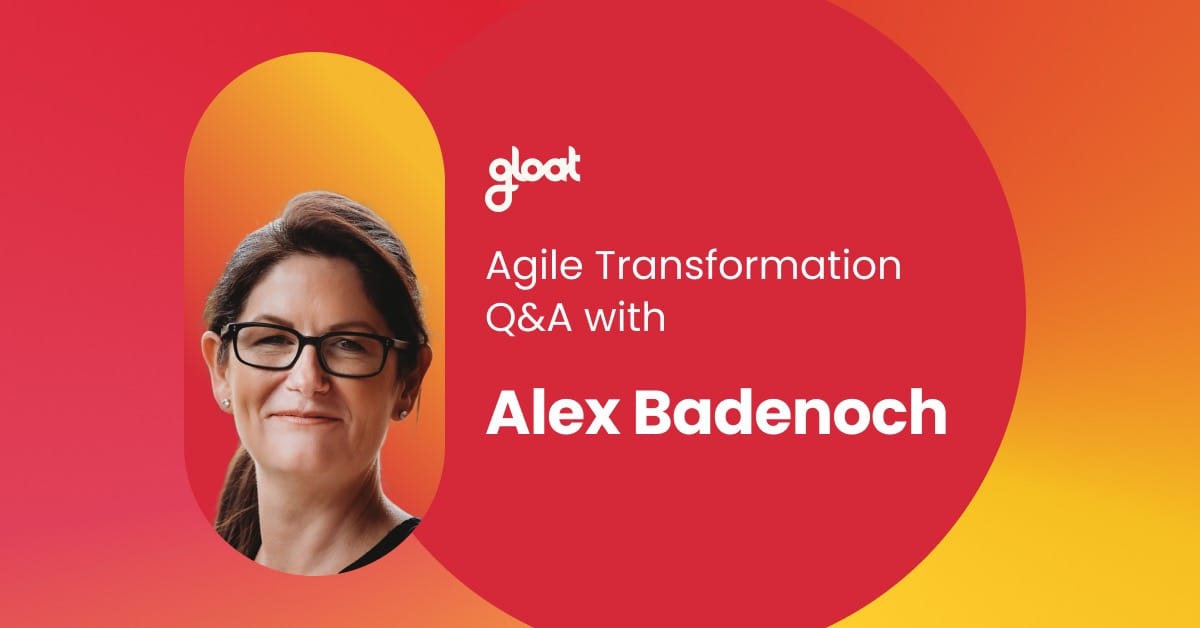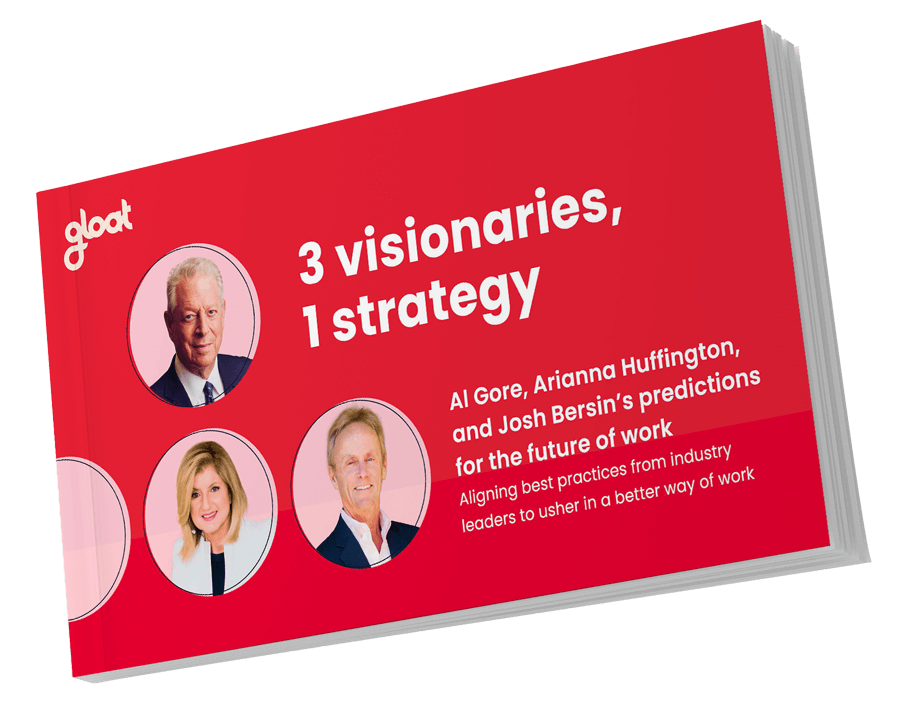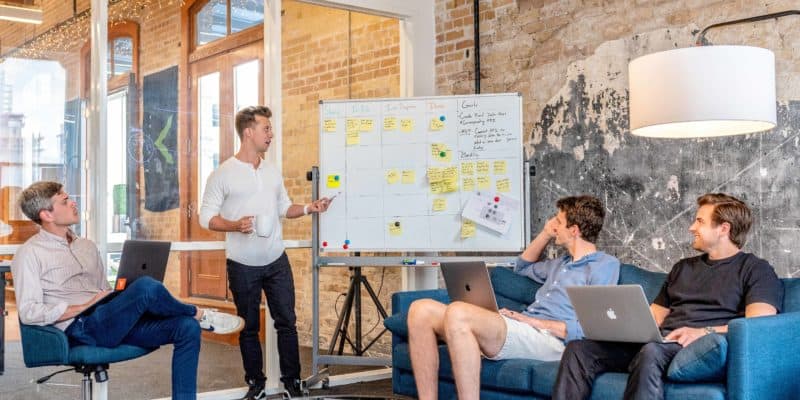Unpacking transformation agendas with agile change expert Alex Badenoch
A Q&A on how to enact changes that effectively shift the way your organization works By now, companies that don’t have plans to enact enterprise-level changes are few and far between. As the pace of innovation accelerates and economic uncertainty continues, it’s easy to understand why 96% of companies are deciding it’s time to embark

A Q&A on how to enact changes that effectively shift the way your organization works
By now, companies that don’t have plans to enact enterprise-level changes are few and far between. As the pace of innovation accelerates and economic uncertainty continues, it’s easy to understand why 96% of companies are deciding it’s time to embark on workforce transformation journeys.
Yet, while most executives are strategizing, far fewer are achieving the results their initiatives are designed to put in reach. Only 30% of leaders believe their organizations have significantly advanced toward their transformation goals.
To help executives push their agendas forward, we caught up with Alex Badenoch, a transformation executive who spearheaded Telstra’s shift to an agile working model. Now, we’re sharing her advice on how leaders can turn transformation goals, into tangible results.
During your time as a transformation executive, what were some of the greatest challenges you faced?
AB: Transformation is interesting. Many companies approach transformation from the perspective of, ‘We’re going to transform our digital environment or we’re going to transform our customer experience.’ But ultimately transformation has to start from within an organization. If you think about your structure, your technology, and your ability to set up change and transform, then you can really change external things.
During the last change I led at Telstra we put 20,000 people into an agile structure—which, at an old legacy telco we don’t see happen every day. There were a lot of wonderful things about that in terms of empowering our people. But one of the biggest questions people had was about how they would navigate their careers because they were no longer sitting in a traditional hierarchy. So we needed a dynamic way to both identify skills and track opportunities.
What advice would you give to fellow transformation executives?
AB: I think any transformation needs to start with an understanding of the company. When people are struggling with getting engagement, it’s often because your transformation strategy starts from an HR perspective. But transformation actually has to start at the company level. So when we went through the massive change in Telstra, it wasn’t like transformation and the company strategy were separated. Transformation was the company strategy.
I would encourage people to ask themselves, ‘What is it that needs to change at your company? Why is that your company’s strategy? And what do you need to do with your people to enable that change?’ You need to get that narrative clear because you can’t change your people or your skills for the sake of it. Presumably, it’s in service of the company strategy.
What role do you think the shift to skills-based work will play in transformation efforts?
AB: I can’t imagine a transformation that doesn’t have some connection to skills. If you had the right skills, then you probably wouldn’t need to transform. If you look at most businesses that are trying to transform, it’s either because technology is disrupting their business or customer expectations have shifted.
As a leader, you’ve got to know the skills you have today, what you’ll need tomorrow, and how you’ll close any gaps. That’s the kind of workforce planning that people have talked about for a long time but few have done it. Most organizations have a gap in that space which takes a toll on transformation, longevity, and performance.
What does it take to turn agile at scale into a reality?
AB: To be successful and accelerate change, you’ve got to think about how your organizational system is set up. If we tell people to be agile but they’re still working in a traditional hierarchy, it will be hard for them to get faster. So you have to not only look at the behaviors that enable agility but also is your organization set up to get there.
There are different ways to get there. In my last experience, we used agile at scale as a way of changing our whole business structure. But some of the principles around that required us to put a lot of time and effort into prioritization. Because if you’ve got priorities clear, you’ll be able to move faster and more cohesively. We actually reduced our workforce and flattened our layers because there’s a fine balance between having the right number of people and having too many.
How would you advise other transformation leaders to consider technology as a part of their change process?
AB: I don’t think you can even think about transforming without technology. I’m a big fan of keeping your underlying platform really simple and then thinking about the things you need to augment that technology to make your organization work.
For agile organizations, you’ll need to be able to see skills from both employee and employer perspectives. People need the tools to drive their own careers and leaders must be able to easily find people with the skills they need. Going out and finding those people externally will take months so the first place any of us should look is our own organization. Nine out of 10 times you can solve your problem inside your business. But you need technology to know what skills you’ve got and how to deploy them.
Now that many businesses are prioritizing transformation, how is HR’s role changing?
AB: A lot of people think HR is predominantly emotionally driven but it should be an analytically-driven space that takes into account commercial outcomes and understands how to enable employees to drive results. That’s not a soft mindset, it’s one that’s structured and detailed for execution.
We don’t swim in strictly defined lanes anymore; roles are now working together. Successful HR executives must understand how they intersect. It’s a different way of thinking and for HR that means that skills and data analytics have become more important than they were ever thought to be.
If you’re interested in learning more about what it takes to power impactful workforce transformations, check out our guide to the future of work, which features insights from Al Gore, Arianna Huffington, and Josh Bersin.





